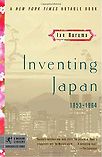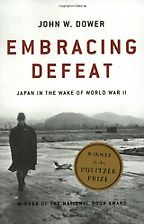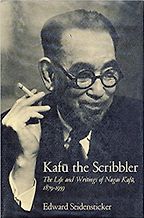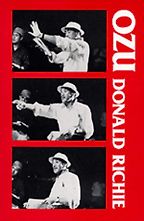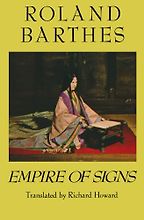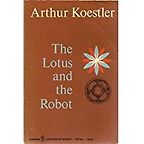You’ve started with Embracing Defeat (1999): why is that first on your list of books on Japan?
I could have chosen many others, but personally I’m very interested in that period of the occupation by largely American troops just after World War II. It’s one of the most extraordinary episodes in modern history. It was the first time that Japan was occupied in its own history, and the world that was created at that time shaped post-war Japan. I think the author, John Dower, has caught that period – with all its complexity and its absurdity and its benevolence and its dark sides – better than anyone else, even, as far as I know, in Japanese. It’s not only a great work of history, but it’s beautifully written. I think history writing at its best should be, and can be, a form of literature and this would be a good example.
Occupations normally don’t work. Does he analyse why in this case it did?
That’s not really the way he approaches it. He analyses it really as a…confrontation isn’t quite the word, but a very peculiar meeting of two very different cultures and civilisations. Even though Japan had already been influenced by the United States as well as Europe for almost 100 years, in 1945 it was still an extraordinary meeting of cultures that was sometimes a confrontation and sometimes a happy mix.
Your next choice is by Edward Seidensticker, Kafu The Scribbler (1965). I believe it’s a translation of some of Kafu’s stories as well as a biography?
It’s not a full biography, but about two-thirds of the book is a biographical sketch by Seidensticker, who was a formidable translator and Japanese scholar. He was one of the translators of The Tale of Genji, and a very literary scholar – he had a wonderful style. Nagai Kafu is perhaps not the greatest Japanese writer who ever lived, but he is one of the more interesting ones and somebody for whom Seidensticker felt a great love – something I share.
Yes, tell me a bit about Nagai Kafu, because even people who have lived in Japan haven’t necessarily heard of him.
Kafu came from a well-educated family and was sent, in the late 19th century, to America – first to Kalamazoo, Michigan, to study and then to New York, where he spent most of his time hanging out in Chinatown, indulging his passion for prostitutes and opium dens. He then went to Paris, which he liked better than he did America. He came back to Japan very well versed in French literature and became a professor of French literature in Tokyo. But he quickly turned his back on the academic or even the respectable literary world in Tokyo and spent most of his life in the more raffish neighbourhoods of eastern Tokyo, where the red-light districts were.
“It was the first time that Japan was occupied in its own history, and the world that was created at that time shaped post-war Japan.”
He liked nothing better than to sit backstage at strip shows (and that kind of thing) and he described that world almost always in a nostalgic way. Because, of course, Tokyo was almost completely destroyed in 1923 by the earthquake and then again in 1945, and, in any case, when it wasn’t destroyed by bombs or earthquakes it was changing very fast through redevelopment. So it was always a city that was disappearing – or at least changing radically – and he was the great chronicler of what had faded and what was no longer. So memories of a Tokyo that was no longer there, or the little bits that were still there and reminded him of the old days, are very much his material.
Get the weekly Five Books newsletter
He was a short story writer, really, a writer of novellas more than novels and a great diarist and an extraordinary, eccentric figure – one of the few, by the way, who during World War II was resolutely against the ultra-nationalism that many other Japanese writers at the time embraced.
So you like him because of the snapshot he gives into that bygone era, but also because you find him fascinating as a person?
Yes, I like his writing style and I like the subjects – I share his interest in the demi-monde of Tokyo, and the old districts, and I think he was a very fine writer of short stories. Not so much of his work has been translated, but the most famous stories have been.
Let’s go on to your next choice, which is by Donald Richie, about Yasujiro Ozu (1974), the film director.
Ozu’s world is very different from that of Nagai Kafu. His best films and his most famous films were made after World War II and are largely about the Japanese upper-middle class. They’re beautiful, profound films about people coming to terms with life, and coming to terms with the limits of human existence. They are films that have been stylised to show the essence of life rather than lots of action. And I think the writer who has conveyed the style of Ozu, the beauty of his films and the cultural context of them best is Donald Richie, who has written a lot about film, and, unlike many film scholars, is a very good writer. I read his books on Japanese film before I went to Japan and before I’d seen many of them – and even then you felt you had learned a lot, not only about film but about Japan itself.
What would you recommend as the first film of Ozu’s to watch, if you haven’t yet seen any?
The most famous one is Tokyo Story, but there are many other fine ones – Late Autumn, Early Summer.
It must be amazing to get a sense of Japan at the outset of that period of rapid modernisation and the country’s economic miracle…
Yes, the films are set in that period. Ozu started his career in the 1920s, and his films go all the way through to the 1960s: he died in 1963. A lot of them are family dramas, Tokyo Story being one of them, made in the 1950s. They show the changes of Japanese life and Japanese family life at a time of fast economic development.
Your next book, Empire of Signs (1970) by Roland Barthes – how does that fit into the picture?
I suppose what all these books have in common is that they are written not by novelists but by scholars – all of whom are interesting for their literary style, as well as their scholarship. Barthes again, unlike many of his followers, was himself a very fine writer. His followers took the jargon but didn’t have the style, and Barthes, of course, invented a lot of the jargon of cultural studies.
“ One thing that interested him about Tokyo was the fact that nobody really knows anybody’s address – it’s a not a city of addresses.”
He went to Japan without really knowing anything much about it. Yet I think it’s one of the most intelligent accounts of Japan. He had never been to Japan before, and did not go there as a scholar, or as a researcher, or to go deeply into a particular subject. He simply let the impressions of Japan sink in and made something of them. And what he made of them is still of great interest. In fact I think he says, at the beginning of the book, ‘This is not about Japan, it’s about an imaginary country I call Japan’ – so it’s very much his take, based on random impressions. He was such an intelligent and observant man, that they’re still very much worth reading, even to someone who knows Japan well.
What exactly is the empire of signs then?
Well he was a semiotician, and semioticians look for signs and symbols. So, for example, one thing that interested him about Tokyo was the fact that nobody really knows anybody’s address – it’s a not a city of addresses. If you go somewhere for the first time, your host or hostess has to give you an accurate map or description – for example, you turn right at the greengrocers and left at the tobacconist and then you go straight on, and so on. And if you don’t have those directions, then no taxi driver will be able to take you there. He found that fascinating. So he looked at a map of Tokyo and the geography of Tokyo and extrapolated from that a particular way of thinking, an attitude towards urban space which was unusual and interesting.
Lastly, let’s talk about The Lotus and the Robot (1960). This is about Arthur Koestler’s trip to India and Japan in 1959 to study Eastern mystical traditions, including yoga and Zen.
This book was written at a time when there was a sense of malaise in Europe – people felt that Western civilisation was on its last legs and didn’t have much to contribute any more. There was a lot of fear of nuclear war and it was also the time when people began to say that the Orient had a certain wisdom to impart. We’d reached the limits of rationalisation and the Enlightenment, and the spiritual traditions of Asia had something special to teach. So he went to India and to Japan to test this idea, and he clearly liked Japan better than he did India, even though he was critical of many aspects of it. For example, he had a rationalist’s distaste for a lot of the mumbo jumbo about Zen archers hitting the target with their eyes closed, and so on and so forth. Again, it’s like Barthes, in that he didn’t know much about Japan. He went there, he stayed there longer than Barthes did, let things sink in, and he reflected on them and came up with interesting insights.
Does he find enlightenment in the spiritual traditions of the East?
He wrote at the end of the book that it made him feel more at home with the figure perched on the back of the bull, Europa. But he also said that if he had to choose any other place to live in the world, if it couldn’t be Europe, he would choose Japan. Quite why he said that he doesn’t really explain…
Five Books aims to keep its book recommendations and interviews up to date. If you are the interviewee and would like to update your choice of books (or even just what you say about them) please email us at [email protected]
Five Books interviews are expensive to produce. If you've enjoyed this interview, please support us by donating a small amount.

